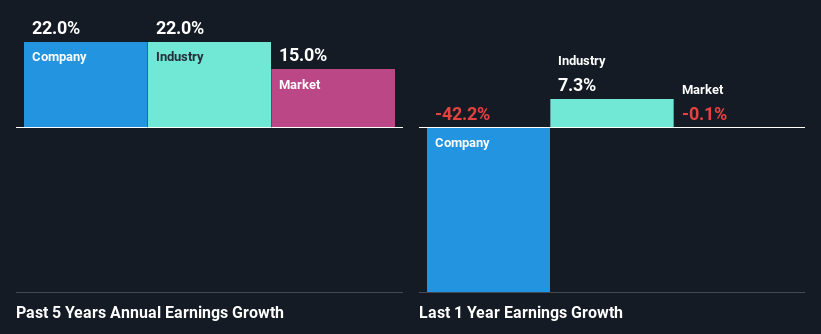Is Kelsian Group Limited's (ASX:KLS) Recent Price Movement Underpinned By Its Weak Fundamentals?
With its stock down 20% over the past three months, it is easy to disregard Kelsian Group (ASX:KLS). We, however decided to study the company's financials to determine if they have got anything to do with the price decline. Stock prices are usually driven by a company’s financial performance over the long term, and therefore we decided to pay more attention to the company's financial performance. Particularly, we will be paying attention to Kelsian Group's ROE today.
ROE or return on equity is a useful tool to assess how effectively a company can generate returns on the investment it received from its shareholders. In other words, it is a profitability ratio which measures the rate of return on the capital provided by the company's shareholders.
View our latest analysis for Kelsian Group
How To Calculate Return On Equity?
The formula for return on equity is:
Return on Equity = Net Profit (from continuing operations) ÷ Shareholders' Equity
So, based on the above formula, the ROE for Kelsian Group is:
3.2% = AU$30m ÷ AU$912m (Based on the trailing twelve months to December 2023).
The 'return' is the income the business earned over the last year. So, this means that for every A$1 of its shareholder's investments, the company generates a profit of A$0.03.
What Has ROE Got To Do With Earnings Growth?
Thus far, we have learned that ROE measures how efficiently a company is generating its profits. We now need to evaluate how much profit the company reinvests or "retains" for future growth which then gives us an idea about the growth potential of the company. Generally speaking, other things being equal, firms with a high return on equity and profit retention, have a higher growth rate than firms that don’t share these attributes.
Kelsian Group's Earnings Growth And 3.2% ROE
It is hard to argue that Kelsian Group's ROE is much good in and of itself. Not just that, even compared to the industry average of 10%, the company's ROE is entirely unremarkable. However, we we're pleasantly surprised to see that Kelsian Group grew its net income at a significant rate of 22% in the last five years. We reckon that there could be other factors at play here. For example, it is possible that the company's management has made some good strategic decisions, or that the company has a low payout ratio.
Next, on comparing Kelsian Group's net income growth with the industry, we found that the company's reported growth is similar to the industry average growth rate of 22% over the last few years.
Earnings growth is an important metric to consider when valuing a stock. It’s important for an investor to know whether the market has priced in the company's expected earnings growth (or decline). This then helps them determine if the stock is placed for a bright or bleak future. What is KLS worth today? The intrinsic value infographic in our free research report helps visualize whether KLS is currently mispriced by the market.
Is Kelsian Group Using Its Retained Earnings Effectively?
The really high three-year median payout ratio of 108% for Kelsian Group suggests that the company is paying its shareholders more than what it is earning. Despite this, the company's earnings grew significantly as we saw above. Having said that, the high payout ratio is definitely risky and something to keep an eye on. You can see the 5 risks we have identified for Kelsian Group by visiting our risks dashboard for free on our platform here.
Additionally, Kelsian Group has paid dividends over a period of at least ten years which means that the company is pretty serious about sharing its profits with shareholders. Upon studying the latest analysts' consensus data, we found that the company's future payout ratio is expected to drop to 52% over the next three years. Accordingly, the expected drop in the payout ratio explains the expected increase in the company's ROE to 11%, over the same period.
Conclusion
Overall, we have mixed feelings about Kelsian Group. While the company has posted impressive earnings growth, its poor ROE and low earnings retention makes us doubtful if that growth could continue, if by any chance the business is faced with any sort of risk. That being so, the latest analyst forecasts show that the company will continue to see an expansion in its earnings. To know more about the latest analysts predictions for the company, check out this visualization of analyst forecasts for the company.
Have feedback on this article? Concerned about the content? Get in touch with us directly. Alternatively, email editorial-team (at) simplywallst.com.
This article by Simply Wall St is general in nature. We provide commentary based on historical data and analyst forecasts only using an unbiased methodology and our articles are not intended to be financial advice. It does not constitute a recommendation to buy or sell any stock, and does not take account of your objectives, or your financial situation. We aim to bring you long-term focused analysis driven by fundamental data. Note that our analysis may not factor in the latest price-sensitive company announcements or qualitative material. Simply Wall St has no position in any stocks mentioned.

 Yahoo Finance
Yahoo Finance 
